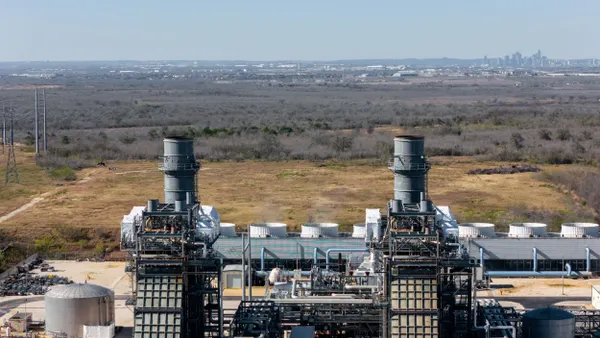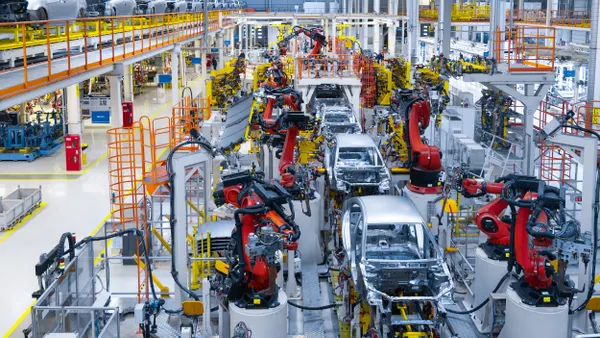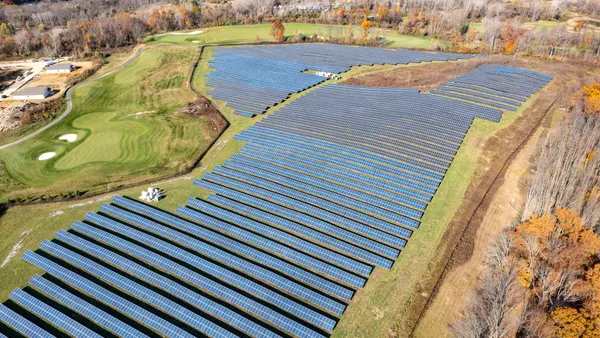Dive Brief:
- Kansas, Iowa and Oklahoma generated the highest percentages of their power mix from wind and solar in 2018, according to data from the U.S Energy Information Association's 2018 inventory of the electric power sector analyzed by a Natural Resources Defense Council analyst.
- Vermont, North Dakota and South Dakota follow in the rankings, indicating a shift in the nation's power mix that has been several years in the making, Amanda Levin, the NRDC policy analyst who pulled the numbers, told Utility Dive. The change is driven by two factors, she said: state leadership pursuing clean energy policies as well as the "pure economics" and "corporate interest" driven by competitive market prices for the renewable fuels.
- Meanwhile, coal consumption in the U.S. decreased by about 27%, with natural gas additions outpacing solar and wind additions in 2018.
Dive Insight:
The regional resource mix shift across the Great Plains is indicative of how cost-competitive resources like wind have overtaken the energy sector in recent years, even in states where there isn't outright political support for clean energy.
Kansas and the Dakotas have plans to continue development in the 2020s, partly to "entice" data centers to come to their states for cheap, clean energy, as well as working to simply meet new demand and replace worn out fossil fuel facilities, said Levin.
| State | Wind and solar total % of generation |
State | Wind % of generation |
|---|---|---|---|
| Kansas | 36.5% | Kansas | 36.4% |
| Iowa | 33.9% | Iowa | 33.7% |
| Oklahoma | 31.8% | Oklahoma | 31.7% |
| Vermont | 26.8% | North Dakota | 25.8% |
| North Dakota | 25.8% | South Dakota | 24.4% |
| South Dakota | 24.5% | Maine | 21.0% |
"Most of the five largest states for wind and solar, as a percentage of generation from wind and solar, are in the Midwest and they're states that I don't think typically get thought of as clean energy leaders," said Levin.
She said that as these states begin to phase out coal-fired power, wind and solar have become viable replacements in the past four to five years, although natural gas outpaced other types of generation additions in 2018 across the country, particularly in Midwest states where natural gas had not previously dominated.
States like Indiana, which had historically been coal-reliant, are finding that wind and solar may be more cost-competitive. But Indiana also increased its natural gas adoption by about 41% in 2018.
The growth is likely "because [the] Midwest has been less dependent on natural gas historically, and more dependent on coal," said Levin. "The regions that in general saw the fastest growth were kind of the upper Midwest and then the plains region."
Meanwhile, states in the West are seeing a decrease in natural gas adoption, which is largely related to meeting emissions targets in states like California and Washington, she said.
"Those utilities, whether because they're trying to reduce their risk or they're trying to meet the wishes of their commission, are looking much more toward battery storage, solar and wind than, say, natural gas to kind of meet or follow the renewable generation."














